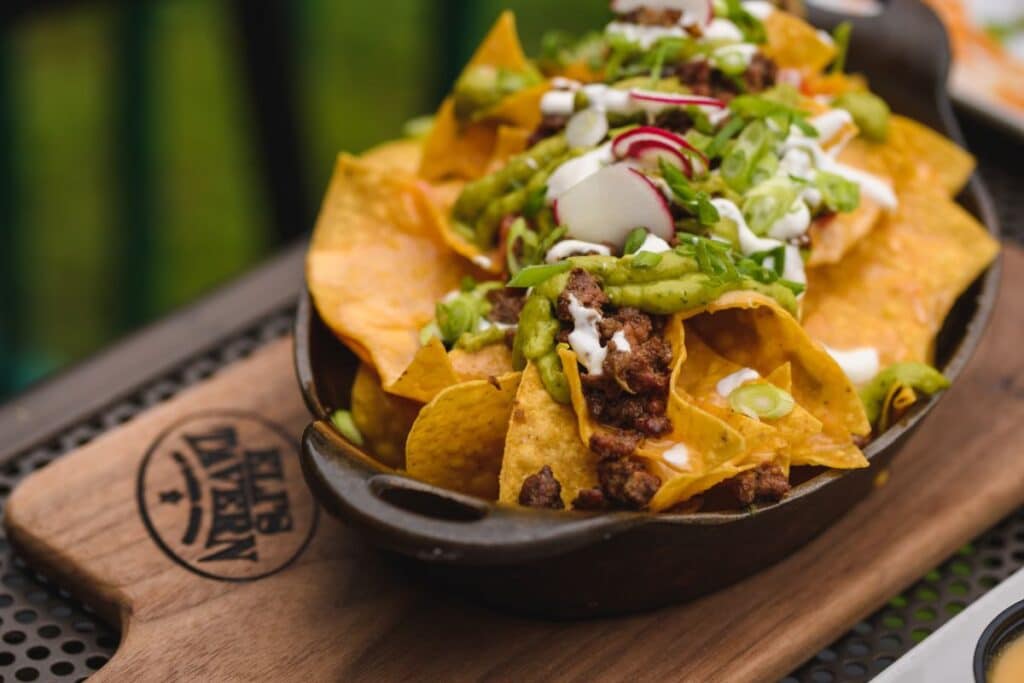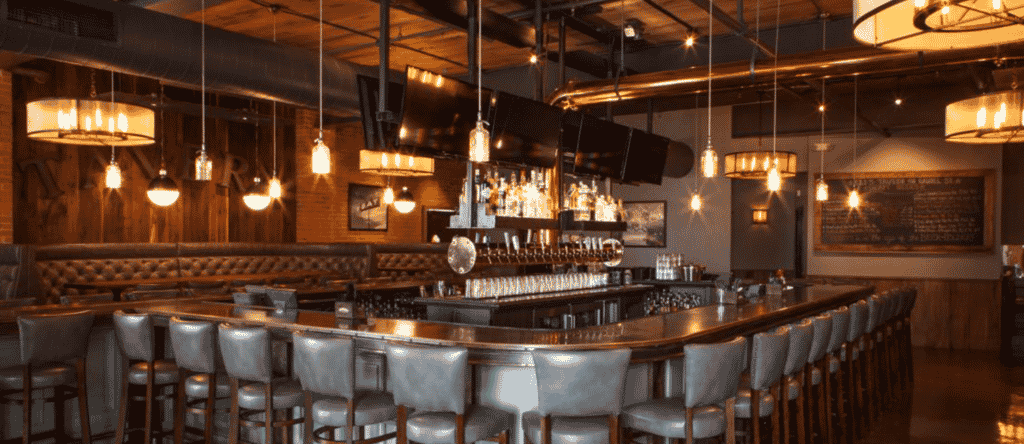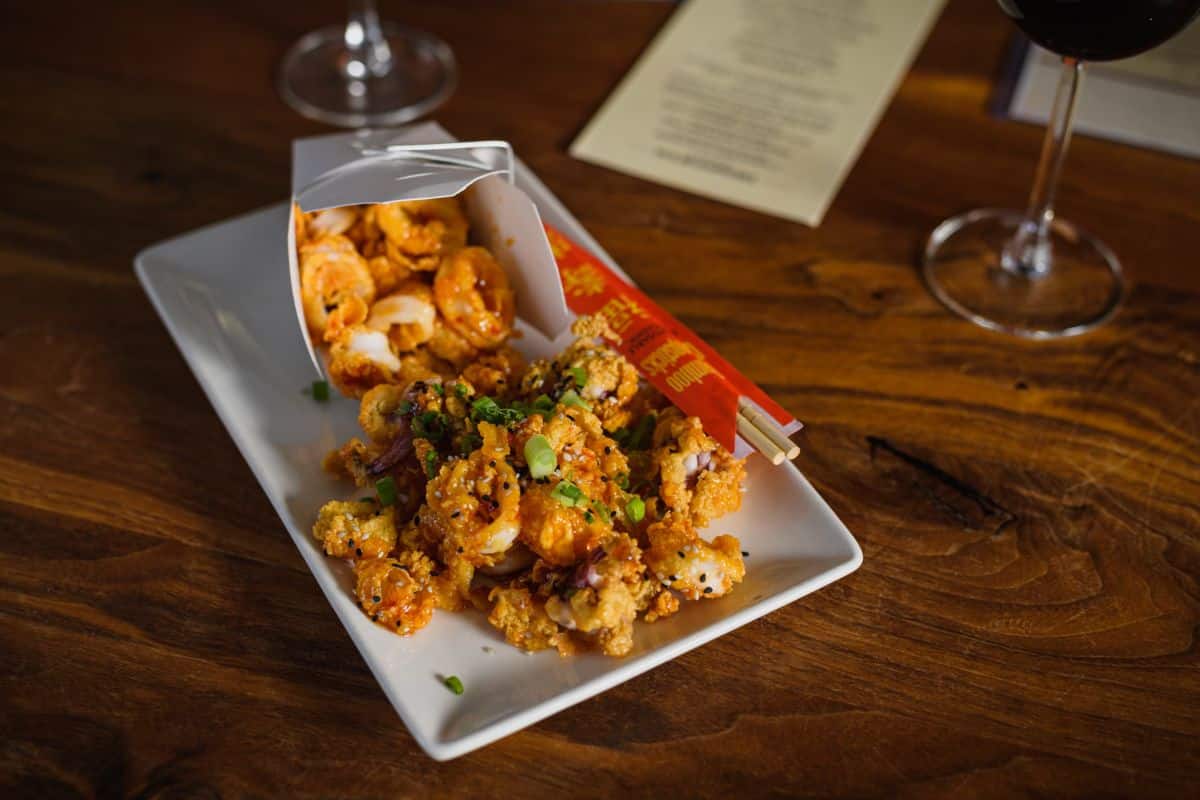Background
Eli’s Restaurant Group is a family of restaurants that’s called Connecticut home for more than two decades. With six restaurant locations and a catering arm, Eli’s Restaurant Group shares the vision that upscale American cuisine can be combined with a friendly, inviting atmosphere. Eli’s provides a “perfect place for families, friends, and sports fans to eat, drink, and enjoy.”
Restaurants include Eli’s Brick Oven Pizza, popular for its pizza and wine; Eli’s on Whitney, featuring casual American food in an upscale sports atmosphere; Eli’s Branford, boasting an extensive selection of draft beer, wine and martinis, along with classic American food; Eli’s Tavern, a New York City-inspired gastropub serving upscale tavern food; Eli’s Orange, serving upscale American fare with an Italian twist; and Elicit Brewery, famous for its versatility as a brewery, beer hall, cocktail bar, lounge, arcade, restaurant, and much more.
Challenge
Eli’s implemented Restaurant365 in 2018, but until recently the restaurant group used the platform only on the accounting side of the business.
However, with the arrival of Eric Steinbach as chief operating officer in May of 2020, Eli’s started to apply Restaurant365 to operations as well.
Prior to expanding how they used Restaurant365, says Mr. Steinbach, Eli’s wasn’t generating consistent nor accurate data for food and labor costs. The restaurant had a need for even simple reports like a profit and loss statement (P&L) to better analyze the business.
“There were a lot of decisions being made by emotion or feelings, that weren’t necessarily grounded in real data,” said Mr. Steinbach.
Previously, Eli’s had relied on many manual processes to make decisions. Mr. Steinbach reported that without robust data, it was difficult to finish projects like costing out food and beverage items.
For instance, because Eli’s had loose recipes that weren’t consistent between the six restaurants, there weren’t comparable food cost numbers across locations. Calculating a theoretical food cost wasn’t possible without reliable numbers.
As Eli’s worked on new menus, Mr. Steinbach spoke about the questions they needed to consider, but didn’t have data for. “What should I charge for this? Can I afford to put this item on the menu? What’s it going to do to product mix? Is this item as profitable as we need it to be?” he listed.
By expanding the use of Restaurant365 into operations, Eli’s was looking to access “clear line data” about everything from recipe costing to monitoring P&Ls.

Solution
With the automations from Restaurant365, Eli’s saw huge gains in efficiency almost immediately.
The time savings have been especially impactful in areas like menu planning, said Mr. Steinbach. After implementing weekly inventories, Eli’s was generating the data needed to monitor whether menu items were priced correctly. The easy reporting in Restaurant365 allowed Mr. Steinbach to quickly pull food costs and cross-examine menu prices.
“Being able to have that data built out in the system through the AP gives us the ability to do that, without having to go to a file cabinet, pull out an invoice, and do all the mental math,” he explained.
Mr. Steinbach reported that the most recent menu rollout was faster and more efficient than ever, saying, “we’ve already given ourselves more time and we’re getting farther and farther ahead with our strategic planning.”
Building standard recipes in the system to get the true plate cost has also become part of the R&D of new menu items, said Mr. Steinbach. Restaurant365’s automated AP integrations and invoices that accommodate vendor price fluctuations for ingredients make data-driven pricing much easier.
“To be able to have that information at our fingertips has definitely allowed us to be a lot more fluid with the research and the decision-making process,” he added.
Whether costing out new specials or establishing standards for existing menu items, recipe costing has allowed Eli’s to closely monitor variances between its actual vs. theoretical (AvT) food costs.
The leadership team reviews Restaurant365’s AvT analysis report with location managers on a weekly basis. These meetings encourage accurate reporting counts, in addition to enabling corporate to hold managers accountable.
“We can judge our team’s performance on whether they’re actually following the recipe, generating too much waste, and where the waste is coming from. We can start sleuthing it in terms of how much money we left on the table,” Mr. Steinbach said.
As an example, he recounted how before using R365, the team noticed a repeated pattern of variances in three different types of shredded cheese and heavy cream. After reviewing, they theorized that the specific ratio meant that one of the locations was making the macaroni and cheese dish incorrectly, which was later verified by the kitchen.
“Add that waste up over 14 shifts, seven days in a week, and it adds up pretty quickly,” Mr. Steinbach said.
With AvT tracking, Eli’s was able to get to the root of the problem and address the behavior that was creating the waste. “Being able to use that combined knowledge of what the recipes should be with the data that’s being generated from your clean inventory account—it can be kind of used as a treasure map,” he said.
Beyond food costs, Mr. Steinbach also mentioned using Restaurant365’s tool for graphing hourly sales and hourly labor deployment with his location managers.
Managers used to follow a “set schedules” method, where they always scheduled the same labor every Tuesday shift for example, Mr. Steinbach explained. However, with Restaurant365’s labor tools, the team instead started to leverage sales forecasts to determine labor needs.
“We’ve been playing around with the labor matrix behind it to build out a theoretical labor based on sales flow,” he explained. This data has improved the overall business acumen of Eli’s operators, he said, “because they have more access to more data to make better-informed decisions, as opposed to what I like to call the ‘operators gut’.”
Mr. Steinbach reports that these examinations have gotten his managers “much more involved with how their business actually trends in dollars and cents, to make more factual, data-based decisions as opposed to emotional or habit decisions. With AvT tracking, Eli’s was able to get to the root of the problem and address the behavior that was creating the waste.
Although he doesn’t have concrete data for the exact effect on labor, “it is definitely working and helping raise the business acumen of all my operators. We can’t really put a value on that.”
This labor optimization was made possible with Restaurant365’s integration with Eli’s point of sale (POS) system, POSitouch.
“We can use those two things in unison to make sure that we have a properly forecasted sales week, a schedule written to that budget, and it is broken down into what the manager’s earmark should be for that given day,” Mr. Steinbach explained.
Then, with the help of live tools with the POS system working “harmoniously” with Restaurant365, operators are able to track how they are doing in live time. “Being able to just have the seemingly limitless amount of data to be able to increase our operators’ ability to run their business as a businessperson,” he expressed.

Results
In 2019, Mr. Steinbach estimated that between food, labor, and supply costs, Eli’s “left about a $1.5 million worth of profit on the table, just by not having the data in our hands to know whether we were really doing well or not.”
However, even in the tough environment of COVID-19, the implementation of Restaurant365 operational tools have completely changed operations for Eli’s. Mr. Steinbach estimates that due to using the more robust features of Restaurant365, the restaurant group has now closed at least 75% of that $1.5 million gap.
The majority of those savings were in cost of goods sold (CoGS) and labor. “A healthy $600,000 of it was in labor, and probably half a million was in food and liquor, beer, wine (LBW) costs,” he reported.
“We’ve obviously closed that gap significantly in a tough environment, with COVID and restrictions and commodity pressure. We’ve done a heck of a job remaining profitable throughout a really, really tough time,” he said. I wish I had last year sales now with everything we have in place, because we’d be printing cash out the back door.”
One key piece of Eli’s results has been addressing the variance in its AvT costs. Combined with recipe costing and inventory management, the restaurant group was able to accurately evaluate menu item profitability.
Eli’s started by examining regular menu items that weren’t pulling the type of profit they needed, and operators were able to get a grip on the pricing for the in-house specials run by individual locations. The increased accuracy in CoGS was especially important for the catering arm of the business, which dealt with huge orders.
Mr. Steinbach explained the multi-tier benefit of applying Restaurant365 to food costs. “Not only do we actually know what our theoretical food cost is now, but we’ve been able to lower the theoretical and make vast improvements in lowering our actual food cost and LBW costs as well.”
From being able to drill into recipes to make sure they are costed appropriately, “I’d say our theoretical has been 2.5-3% improved through that process,” he reported. “The Restaurant365 system has been absolutely critical to us being able to do that.”
Mr. Steinbach estimated that before the company started to implement Restaurant365 on the operations side, Eli’s was 70-80% efficient for all units. “Now, the average is 92-93% across all food and drink,” he reported.
Expanding the use of Restaurant365 with Eli’s Restaurant Group was a worthwhile investment, he said, given how powerful and intuitive the system is. “The ease and simplicity of the system for what you get is absolutely worth it… It’s operator-friendly and easy to navigate,” Mr. Steinbach summarized.
As Eli’s prepares for the future, including possible new local COVID restrictions, the tools and time savings offered by Restaurant365 are essential for planning. To be able to understand the product mix, profit margin within “a couple clicks” helps the team make decisions on what to push, what to discount, and how to protect margins.
“When the owners call up and say, ‘I want to know this bit of information’, it’s nice to not have to think, ‘Oh, I need to clear out the next three days, get out my abacus and sundial, and try to figure it out,'” Mr. Steinbach joked.
“Most of the time we can pretty quickly and easily run the report, customize it, push and pull, do whatever we need to do. And in a very short amount of time, we are able to get that data back to them.”
“The amount of data that we have at our fingertips now is unlike anything that we’ve had for 20-25 years of our existence,” he concluded.



